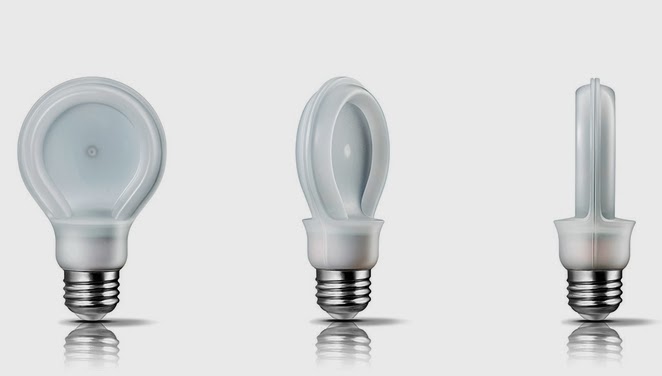I have great news: the compact fluorescent is DEAD! And good riddance.
Now more than ever, it is important to choose lighting options that save not only energy but money. And LED lights fit that bill. They are not only the wave of the future, they are the wave of the present! In fact, a recent study by the Department of Energy examined all the steps needed to fabricate, ship, operate, and dispose of LEDs, compact fluorescent lights (CFLs), and traditional incandescent lighting, and the clear winner was the LED! When toxicity, ecosystem damage, climate change, and ozone depletion concerns were factored in, LEDs were far ahead of the other two options.
LED stands for Light Emitting Diode and uses an effect called electroluminescence to generate light. They use electricity and electrons so there is no filament to burn out. For many years, LEDs were only seen in tiny applications like indicator lamps, and in seven-segment displays like digital clocks. But in the last decade or more have we seen LEDs become a viable alternative replacement for incandescent bulbs and the dreadful fluorescent light.
With the phasing out of the standard incandescent A bulb (which is the classic "screw in" light bulb with a wide base used in all of our table lamps, and ceiling and wall fixtures) in watts ranging from 100 to 40, the LED industry has stepped up to provide us with some choices that for all intents and purposes act, look, and perform exactly like incandescent lights. Take a look below at the chart I made to illustrate the differences between incandescent, fluorescent, and LED lighting.
You can see that LEDs last longer (MUCH longer!), are more energy and cost efficient, and are safer to use (no glass to break) and safer for the environment (no toxic hazardous gases or toxic mercury). When looking at the lighting choices of the chart above, we must keep in mind that incandescent bulbs are being taken away, so they are off the table. That leaves fluorescent or LED. It is just ridiculous that the fluorescent industry thinks we should be using a product that forces us to leave the room for 15 minutes if a fluorescent bulb breaks, not to mention the fact that disposal requires haz-mat handling! Why would anyone subject themselves to those dangerous conditions and suffer with ugly, chalky light to boot? LEDs are really the only choice!
My early concern with LEDs was with the color rendering and Kelvin temperature. They tended to have poor color rendering (which is a way of measuring the true color of an object seen in a chosen light), and they tended to be a bit on the bluish side. The Kelvin chart below shows how the temperature of light dictates its color.
In order to appear most like an incandescent, you want to find a bulb that will burn at between 2400 and 3000 Kelvin... that will be a light that is warm, comforting, and familiar, like an incandescent. As you see on the chart, the higher the temperature, the bluer the light, until you end up with the blue-white clinical light of halide which is what you see in the enormous overhead fixtures in places like Costco or Sam's Club... or the evil fluorescent. But now, LED bulbs have come a very long way and behave exactly as an incandescent bulb! They come in every shape and in every wattage, like incandescents.
Many companies make LED bulbs but not all are the same quality. Not all have as long of a life as the major brands or reputable manufacturers. And not all are dimmable--a very important factor (make sure you read the packaging)! Companies like Green Creative located here in Northern California are making a wonderful variety of LED bulbs with excellent color rendering.
Advances are being made all the time and Philips just introduced a flat LED bulb that mimics a standard incandescent A bulb but with the energy and money savings we have come to expect from an LED...and with excellent color rendering.
LED bulbs can still be a bit pricey but with the gradual disappearance of 40-100 watt incandescents, and with a projected doubling of revenue for LEDs this year alone, we can expect prices to drop to close to what a regular incandescent bulb would cost. And by 2017, LEDs are expected to be 70 percent more efficient than even today’s CFLs! If you haven't yet, buy a single bulb to replace an incandescent in your home--you won't really be able to tell the difference. I bet you will be replacing all of your bulbs in no time.
Happy designing!





No comments:
Post a Comment